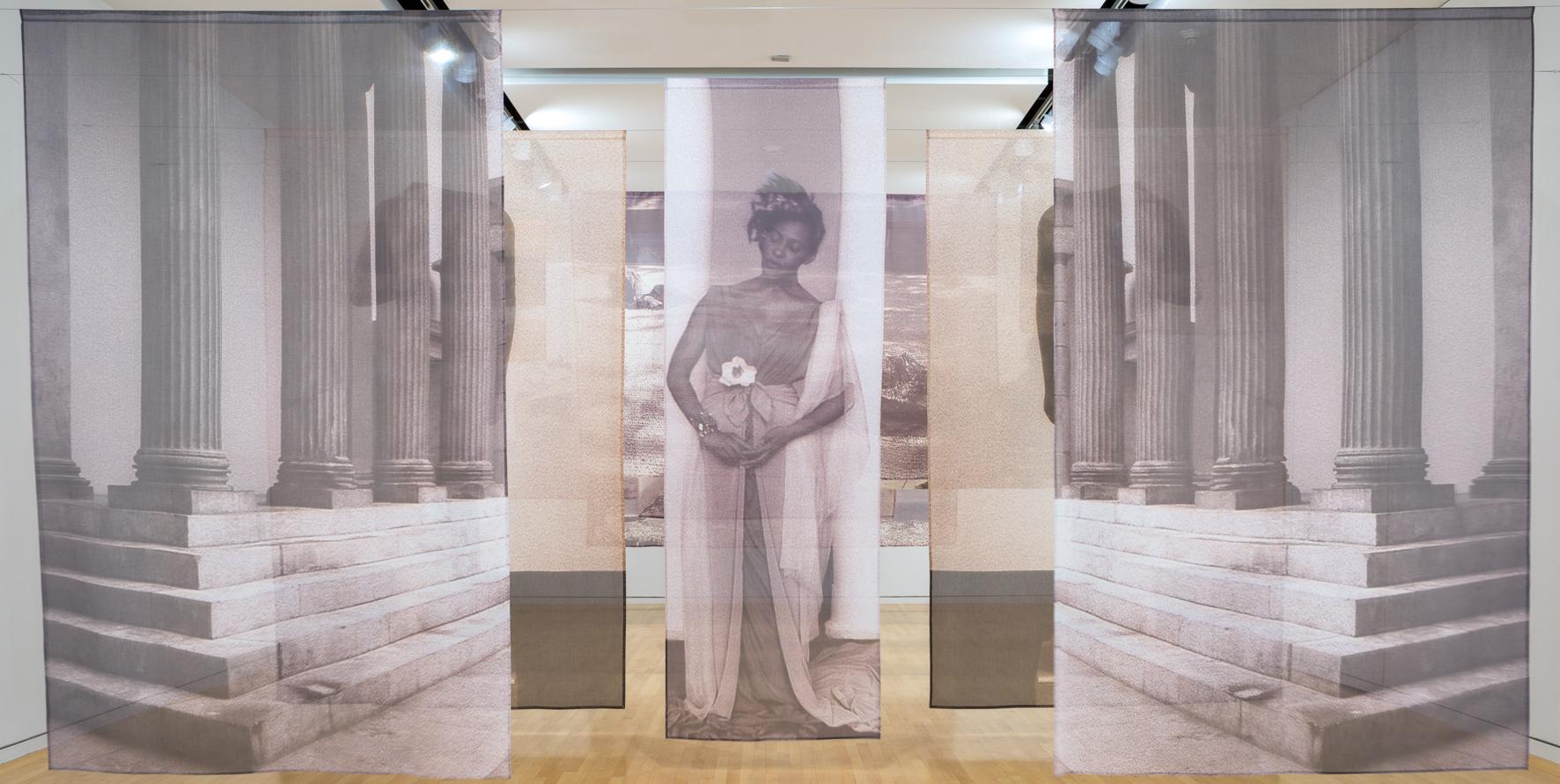
1 minute read
Unidentified photographer — Untitled (Snapshot of visitors to the Lincoln Memorial
Unidentified photographer
Untitled (Snapshot of visitors to the Lincoln Memorial) Mid-20th century Monochrome photographic print 5 x 3 ½ in Mary and Leigh Block Museum of Art, Northwestern University, gift of Peter J. Cohen, 2019.17.24
Built in 1922, one hundred years ago, the Lincoln Memorial is prominently situated on one end of the National Mall and is a popular destination for visitors to Washington, DC. Larger than life, the sculpture honors the 16th president of the United States, who in 1863 issued the Emancipation Proclamation. Through the classical structure, imposing sculpture, and the accompanying text, visitors are meant to recognize Lincoln’s achievements as the preserver of the union at the end of the Civil War and to honor his role in ending slavery.
In this personal snapshot circa 1960, two stylish women stand in front of the statue of Lincoln. One looks up at the monument, while the other looks at the camera. Seeing the photograph from the 21st century, the viewer wonders what the visitors might have taken away from their obligatory pilgrimage. In How the Word Is Passed, Clint Smith reminds us that our stories of the history of slavery are often limited and one-dimensional. As Smith explains, Lincoln had a complicated outlook and his “commitment to ending slavery was not necessarily matched by a commitment to Black equality.”
Smith’s reflections provide ways of thinking about founding fathers and so-called great men in history with greater depth and nuance. Smith encourages accounts that are multifaceted, reminding us that people are more complex than our historical narratives often allow.










